PRESERVING A MILITARY LEGACY FOR FUTURE GENERATIONS
The following Reflections represents TSgt Harry Walker legacy of his military service from 1956 to 1976. If you are a Veteran, consider preserving a record of your own military service, including your memories and photographs, on Togetherweserved.com (TWS), the leading archive of living military history. The following Service Reflections is an easy-to-complete self-interview, located on your TWS Military Service Page, which enables you to remember key people and events from your military service and the impact they made on your life. Start recording your own Military Memories HERE.
Please describe who or what influenced your decision to join the Air Force.
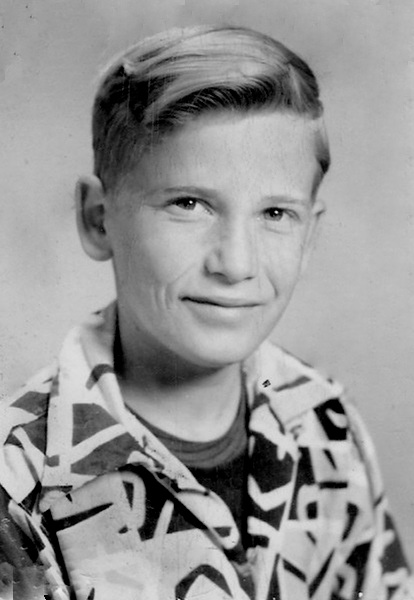
I came from a small textile town in North Carolina, and being poor, once a young person finishes school, the only work in that county is mostly the textile plants, and that is a dead-end job. I wanted to get away from that type of future. One day, I happened to be in town at the bus station, and I happened to notice an Air Force sergeant dressed in blues waiting for a bus. He was sharp-looking, and it made an impression on me that lasted. I lived pretty far from town and school, and I missed quite a lot of school days, which put me behind in my high school grades. Fortunately, my school had a counselor who had taken an interest in my situation and felt that my best option was the military. So, at 17, I talked my mother, who was a single mom raising a large family, into signing up for me to join the Air Force. That most certainly was the best decision I could have made. On January 3rd, 1956, I was on my way to Lackland for my basic training. I was a high school dropout, and my future looked bleak had I stayed in that town, but I was not sure it would have been much better to be uneducated in the military.
Whether you were in the service for several years or as a career, please describe the direction or path you took. What was your reason for leaving?
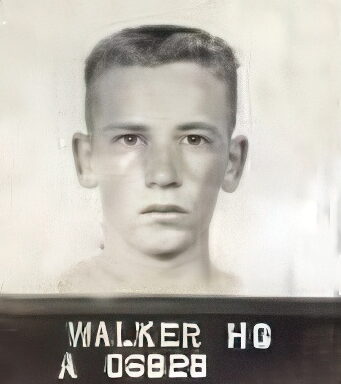
I was assigned to the 3709th BMT training squadron for the six-week duration, and it was uneventful and went by pretty quickly. After BMT, I was on my way to FE Warren AFB in Cheyenne, Wyoming, for school. I graduated from job training school in May 1956, and my first overseas assignment was at Ramey AFB, Puerto Rico. I was shipped to Brookley AFB, Mobile, Alabama, for a MATS flight to Ramey. Still, upon arriving, I was informed that Brookley no longer had flights to Puerto Rico and would be forwarded to Charleston AFB, South Carolina, and my MATS flight to Ramey AFB. I was assigned to the 73rd Bomb Squadron, 72nd Bomb Wing, SAC, working with the huge B-36 bombers. Our SAC commander was General Curtis LeMay, and I learned from the guys that he was an enlisted man’s commander. We did not wear fatigues at Ramey; we wore blue jeans, Tee shirts, and brogans. The Tee shirts had our name and rank stenciled on them, and we loved them. General LeMay also gave us another perk; each Memorial Day weekend, our base had a stand down with an open house, and the flight line taxiways and runway became a race track. The base invited drivers from the island and other areas to participate. It was absolutely outstanding. This was going to be a very enjoyable tour of duty.
Ramey AFB was unusual in that its location in the Caribbean meant that the weather was very nice, the sea was clear and beautiful, and the beaches were the most beautiful in the Military. Because of those excellent attributes, we saw almost all the Air Force VIPs and government representatives throughout the winter months, including the SAC Chief, General LeMay. They came for all that Ramey had to offer, such as golf, sightseeing, and deep-sea fishing. About every two years, the Air Force hosted an international conference that included VIPs and planes of all kinds from the U.S., Canada, Great Britain, Australia, and many other countries that were our partners during the Cold War. It was pretty much a weeklong conference, and they made use of all of our recreational facilities. It was very good public relations for all of the countries involved. All of us young, lower-ranked airmen suffered during this time by keeping the base spotless. Afterward, we all made use of the VIP perks that were left behind.
Our B-36s were a critical part of the NORAD DEW line defense program. They flew continuous missions on routes along our northeastern coast – across northern Canada, Alaska, down the western coast of the United States, and back to our home base. I do recall one mission whereby we had some undisclosed cargo, namely Puerto Rican Rum (we later found out). It seems a deal had been made with the O.K. from some wing commanders that Ramey would do a trade with Carswell AFB on a routine stop. Ramey would swap the Rum, and Carswell would provide fresh Bread, Beef, pork, and some watermelons. We heard that the base Commissary and military chow hall supervisors were some of the culprits. They did this trade for the benefit of the base families and the military dining halls. I did get some of the food purchased through the base Commissary.
If you participated in any military operations, including combat, humanitarian and peacekeeping operations, please describe those which made a lasting impact on you and, if life-changing, in what way?
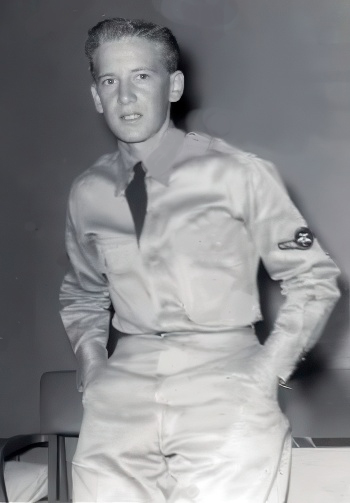
Our SAC wing was part of the Cold War readiness effort to counter other countries’ attack efforts. We had fully loaded, combat-ready aircraft on Hot Alert at our forward base in Casablanca, Morrocco, on 30-day TDYs. At the end of our year-long mission, our wing was awarded the Presidential Unit Citation for that effort. For a young 17 – 18-year-old airman, that was very rewarding. I kept re-enlisting and went on to Bunker Hill AFB and the brand-new B-58 Hustlers, which was very exciting.
I got my wife and daughter established in a small town, Walton, Indiana, situated basically at the end of our Flightline runway, and we rented a home one mile from the base perimeter. We used a perimeter access road to a back gate for entry to the base. It ran right along the runway, and civilians and military used the road. At any time of day, people would find a spot to view the planes taking off and coming in. I often wondered how many foreign spies were there taking pictures and getting details of the hustler. Just as it was at Ramey, there were many incidents on the base, and unfortunately, I was very near several of them. One involved an F101 ADC fighter that took off in a snowstorm, and for whatever reason, after takeoff, it crashed at the end of the runway. That really shook up the family. I knew what had happened, and I jumped into the car and went to the end of the runway. The plane was burning, and I saw that the crash/rescue was coming down the runway. I had better stay away from the scene. The other most disastrous accident involved one of our B-58s taking off, fully loaded with nuclear warheads, and happened as I was getting off work and driving the back way home. As I was driving slowly along the road, I waited for the bomber to take to the air. (note: the Air Force did not have very much research data on the operational ability of the plane in cold weather, and this base was, to some extent, a testing site for that ability.) Unfortunately, as the hustler cleared the runway, it seemed to tilt very much to the left, and it was very obvious that they were in trouble. I slammed on my brakes and looked as the crewmen punched out but only saw two ejection seats exit. I seem to recall that one did not make it – but the nuclear weapons did not receive much damage, and just a small amount of radiation leaked. The crash/rescue crews did an excellent job of containing the fire and damage. I was shocked watching this occur just 200 feet away. All in all, life at Bunker Hill – later re-named Grissom AFB – was pretty much everyday routine stuff.
I had another daughter born at Bunker Hill Hospital, and we were coming up on three years at this base. I had a friend at Ramey AFB who worked in personnel, and we had kids about the same age. Our families got along great. Don transferred to Offutt AFB while I went to Bunker Hill. One day, I got a call from him, and he said he was going back to Ramey for another tour and asked if I wanted to go also. I asked my wife (who absolutely disliked the winters in Indiana), and she said, “Yes, yes, yes). I sent my request to SAC personnel, and soon after, we received our orders. Little did I know that my friend received a change of orders, and he called me to tell me that he was being diverted to Washington, DC, for duty, which helped his career for future advancement. It was O.K. with us, and we were on our way to Charleston and Ramey. Having gained a little rank got us into base housing, and we settled into our new unit and base life. Life was good.
Another tour back to Ramey AFB and the B-52s that had replaced the B-36 bombers. All of these assignments were SAC assignments, and Clinton Sherman AFB, Oklahoma, rounded them out.
Our tour at Clinton Sherman started in 1965 at a time when the Vietnam War was getting hotter, and all of us military guys were wondering when our ticket would be punched for our turn to go. I was always looking for ways to get where the action was, and I had the bright idea of volunteering for Pararescue duty. Anyone could have told you that I was not thinking this thing through, being married with two children, but I did it. I went TDY to upper San Francisco to an AFB that I had not heard of at that time for Interviewing and physical evaluation. I passed the tests and soon went to Fort Benning, Georgia, for jump school. The school was all Army physical parachute training, and I can truthfully say that Air Force personnel had a very rough time getting through the school with recent graduates from Army boot camp and being 18 – 20 year-olds predominately, and here I was, 29-year-old competing, not a good sight and those boys picked me up many times. My injuries eventually caught up with me, and I was not able physically to finish the other pipeline schools that were scheduled. I went back to my old AFSC in computers.
This bumped me up for an assignment to Vietnam, and in October 1967, I was on my way to Bien Hoa AB, near Saigon. Upon arriving, I received a new set of orders that sent me to the central highlands in the middle of South Vietnam, Phu Cat AB, in Bin Dinh Province. The C-7 Caribou puddle jumper dropped me off at Quinon Army Depot, which was about 20 miles from Phu Cat. I waited out the night and caught a ride with an Air Force cargo truck from the base the next day. I was introduced to hootch living and outdoor “tube latrines” around the work areas and Mamma Sans running around your private places as if it were everyday routine. Us GIs shouldn’t make such a fuss about privacy. I arrived at Phu Cat on October 23rd, 1967; my introduction to live fire combat duty came on Halloween night, October 31st.

We had three hootches in a row for our squadron, right at the main entrance to our base, a security tower at the gate, and a dirt road leading down through a small village and onto the main military highway. It seems that our unit was voluntarily segregated by our black guys taking over one of the hootches. On this evening, they were having a cookout party right outside their hootch with loud music, plenty of steaks, and a lot of booze, and they were turning it on. After dark, as they were in the middle of their private party, we came under attack, and it was coming from the village right in front of us. After heading for cover behind our sandbox protection around the hootches, things really got hot and heavy with tracers and many hits on the boxes and our hootches. Actually, this really aggravated the guys partying, and they were standing out in the open, yelling and cursing the VC and challenging the VC to come on and fight. The perimeter patrols and the main tower were engaged very heavily. In a very short time, we were spectators to our airborne “Spooky” C-47 dropping flares and lighting up, especially the rice paddies and fields between our base position and the village down the road. All of the action disappeared as fast as it had started, and needless to say, we did not get much Halloween sleep that night. Life at Phu Cat AB mainly was pretty routine, with minor skirmishes off and on, on or near the base. We had a company of Korean “White Tiger” artillery troops on a piece of the base, and they stayed, for the most part, where they were isolated from the American side. They were very dedicated military guys who fell out every morning and did some rigorous exercise routines while we American troops avoided any form of training. In my case, I paid for not being much more dedicated to a training regimen. The jump school opened my eyes to how Air Force airmen were not physically prepared for hard, tough combat training.
I returned from that tour to March AFB, California, and was told I would return before the year was up. Because of my family, I decided to go for Recruiting duty instead. That duty lasted six years, with a one-year tour to Korat AB, Thailand, interspersed with recruiting. Upon my return, I was assigned to 3503rd Recruiting Headquarters at Patrick AFB, Florida, and I completed my 20-year career in February 1976. Not bad for a Carolina country boy. My education did not suffer; I did get my BA in Sociology, Cum Laud in 1978.
Did you encounter a situation during your military service when you believed there was a possibility you might not survive? please describe what happened and what was the outcome.

Yes, I was at Ramey AFB when I got a telegram from the Red Cross that my little brother had been involved in a school bus accident and had received two broken legs. My boss got me on a C119 flying boxcar headed for Hunter AFB, Georgia, for emergency leave. En route from Puerto Rico, our plane developed engine trouble, and the crew chief returned and helped me put on a parachute. I had been in the Air Force for one year, and I could visualize my career coming to an end. Thankfully, we made it, and I got home safely.
Another incident I previously mentioned was my introduction to Vietnam.
When I arrived at the station at Phu Cat AB, Vietnam, on October 23rd, 1967, I got settled in for my 1-year tour. On October 31st, our base was hit right around dusk from the little village down the dirt road from our main gate. My hootch was right by the entrance, and I remember the African American GIs were having a Halloween cookout at their hootch along with loud music, plenty of booze, and confiscated steaks, and they were pretty fired up. At dusk, the VC opened fire. I could hear the bullets flying through the air with tracers and hitting our hootch. We all ducked behind our sandboxes around the hootch, but the black guys did not make a move; they stood right out in the open, yelling and cussing the VC – daring them to attack. Our MP guards returned fire, and after about 20 minutes, we had a C47 “spooky” lighting up the rice paddies around the village. I know that no exchange of fire is good, but that gunship attack was absolutely beautiful. It was my first time watching the exchange of fire, and it was amazing.
We were right in the middle of the TET Offensive in January and February 1968, as were all of our troops in the central highlands. Phu Kat was hit at least 10 times throughout my tour, but the runways and fuel storage areas received many more.
Several more times during my career when minor incidents happened, but the war zone was the worst time.
Of all your duty stations or assignments, which one do you have fondest memories of and why? which was your least favorite?
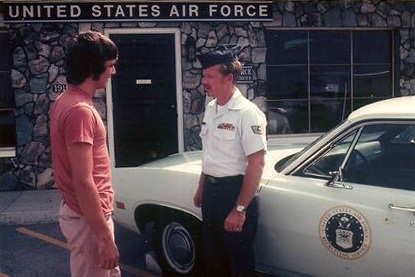
Obviously, my two tours at Ramey AFB, Puerto Rico, were most rewarding, but my six years on Recruiting duty in St. Petersburg, Florida, was a close second. Ramey and the entire island of Puerto Rico was a tropical paradise. My daughter was born there, and both daughters enjoyed some growing-up years on and off base. My military duties were very rewarding and pretty much filled with flight line excitement. Another incident played out during the Dominican Republic rebellion around 1956 – 1957. Overnight, our base and flight line were filled with C123 and C119 troop carriers, which were filled with the 82nd Airborne combat infantry. We moved all of our bombers to the back taxiways to make room for the Army on the runway aprons. This was also the same time I caught a hop on a C119 boxcar to Georgia, and we stopped at the Dominican Republic to drop off troops and supplies and continued on to Hunter AFB.
During our six years on the island, we made many civilian friends, and our daughters had several honorary grandmas who spoiled them very much.
My least favorite was Clinton Sherman AFB, Oklahoma, hands down. This is mainly because of its location in the panhandle, with sagebrush, cotton fields, and tornadoes, not good!
From your entire military service, describe any memories you still reflect back on to this day.
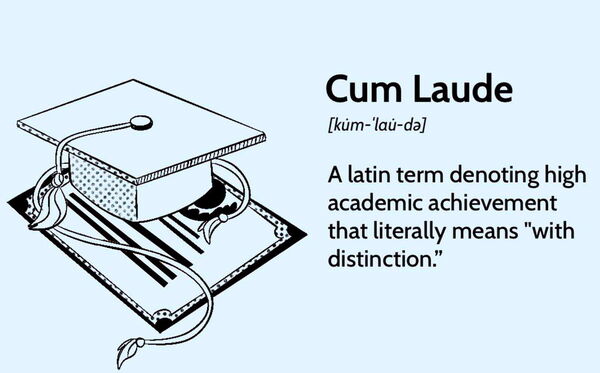
Writing out this short portion of twenty years of active military life cannot even touch the surface of all that fills my memories. Air Force military life was not boring or dull, no! Every base I was at had many mentors, and each one instilled in me good moral values, management, and technical principles that certainly kept me on the right path to a promising career. I do remember them fondly. Captain William E. Barnes, my first OIC; SSgt William J. McCreery, my first NCOIC (who – by the way – was country music star Scotty McCreery’s grandfather); MSgt Glenn Statler, who took me under his wing and taught me very good military management skills, MSgt Andy (Jim) Anderson my recruiting NCOIC and many, many more…… “Good Guys”! One of my most significant accomplishments was earning my Batchelor’s Degree, Cum Laud, in Sociology and becoming the very first in all of my entire family to do so. Not bad for a 9th-grade, 17-year-old school dropout.
What professional achievements are you most proud of from your military career?
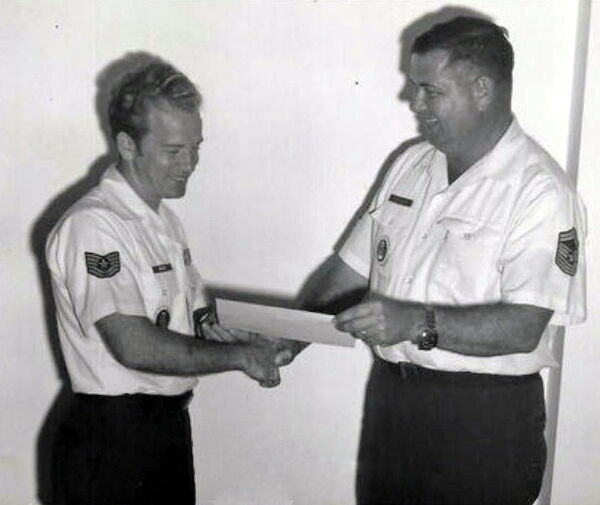
After twenty years of active duty, you can understand that we all can rack up many professional achievements. For every duty assignment I had – I always did my very best to do an outstanding job for my unit. It really paid off by collecting a huge amount of awards and honors, even at the beginning of my first unit, little things to most people, like Airman the Month, quarter, on through the squadron, and base Airman of the Quarter or year. Each one meant so very much to this young Airman at the time. I volunteered and was accepted into Pararescue, and I attended a couple of schools before I had a very serious discussion with my wife. I realized that it was a foolish endeavor for a29 29-year-old with a wife and children depending on their husband and dad for their livelihood and stability in their lives. I reflected on that responsibility and did the right thing to withdraw – which I did.
My educational achievements are the ones I’m most proud of. They certainly helped me throughout my adult working career and became a challenge for my children and grandchildren to do the same. I can proudly say that all five of my grandchildren were or still are active-duty military today.
Of all the medals, awards, formal presentations and qualification badges you received, or other memorabilia, which one is the most meaningful to you and why?
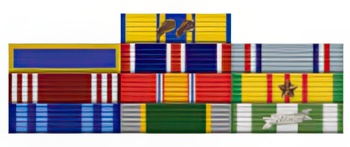
I believe the Presidential Unit Citation is most rewarding because I had a role in its award to my bomb squadron. This was a big deal for Ramey. When those B-36s took off fully armed and loaded, headed for our hot alert base, it filled all of us with pride, knowing that we had hands-on experience protecting our country and families. My three Air Force Commendations were right up there, too, and of course, my Vietnam Campaign award rounded out the top three.
Which individual(s) from your time in the military stand out as having the most positive impact on you and why?
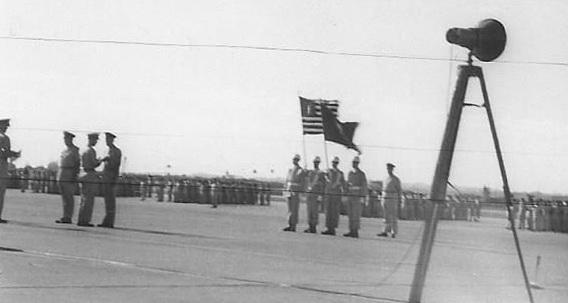
I had a couple of great guys at Bunker Hill AFB (now Grissom AFB), Indiana. As a liaison representative for my unit with the civil engineering squadron, I worked inside their control room as a go-between for engineering support. The commander, Major Norris Goodwin, and SSgt James Northernor adopted me into their unit as an honorary civil engineer. They taught me and guided me throughout my time with them and both men instilled in me very fulfilling work and management values that were at the forefront of my growth for the rest of my military and civilian careers.
SSgt Donald Martin, my personnel buddy, and good family friend, showed me through his family and work ethic what it meant to be completely honest, truthful, and above board in all you do at work and at home with your family. He was certainly a good guy, and it took him far up the ladder in his career field in the Air Force.
Of course, you ran into some guys who were not good representatives of good conduct and good role models, but these good guys I had contact with went above and beyond what was expected of them and impacted my life and career tremendously.
List the names of old friends you served with, at which locations, and recount what you remember most about them. indicate those you are already in touch with and those you would like to make contact with.
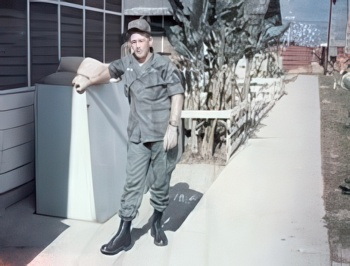
In 1956, I was a young, inexperienced airman, and that period of time was certainly when I gained experience in work and personal life. My friends from my enlistment time and on Ramey were Airman Robert Norton from Charlotte, NC, SSgt William J. McCreary, TSgt Claude Crace, and many more contributors to my life’s lessons.
I certainly had many mentors and personal friends among my military brothers and even a few sisters(Some names evade my memory). I remember my first WAF OIC, who was a great military officer and manager. I was in charge of our computer facility at Phu Kat AB, and this female Officer came into the unit as the OIC of our computer section. As it so happened, she was the daughter of the Admiral in command of Pacific Naval Operations at the command headquarters, Philippines. After several months on the job, I had a run-in with another NCOIC of another section, and boy, she jumped all over that guy, and he left in a big hurry…… she was a “Mother Hen caring for her brood!”
Can you recount a particular incident from your service, which may or may not have been funny at the time, but still makes you laugh?
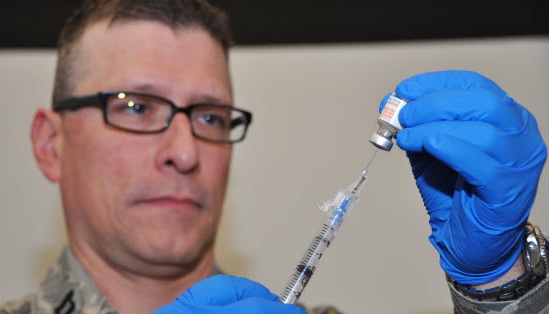
I do recall while I was at Phu Kat, RVN, our sanitary hygiene facilities were not the best and were to blame for an outbreak of a hepatitis infection. One week, all of the base personnel (including some female personnel) were required to get hepatitis shots to prevent a larger outbreak among the troops. On this particular day, as we came into the chow hall, the medical team was waiting for us to receive our hepatitis shot. At the time, the chow hall was full of troops ( who had already had their shot), of mixed company, and was having a lot of fun at our expense because they knew what was coming next. Sure enough, we were told to drop our pants, and they proceeded to give us a big shot right in the bare rear. “Not Funny”!
Also, remember the night our hootch had a close call during a nighttime rocket attack. At 2 A.M., lights were out, and everyone was asleep. All hell broke loose as some rockets zeroed in on the hootches. One rocket did hit the sandbagged bunker, and all of the debris was slammed against the hootch and threw dirt, dust, and shrapnel into the room. I was knocked out of my upper bunk and hit the floor out of a dead sleep; no lights and crawling around on the floor in a daze i did make it to the door and found another bunker until the all clear sounded. The following day, all of my hootch buddies had an exciting time telling tall tales of crawling around on the floor, still half asleep. Today, it is funny to reminisce.
What profession did you follow after your military service and what are you doing now? if you are currently serving, what is your present occupational specialty?
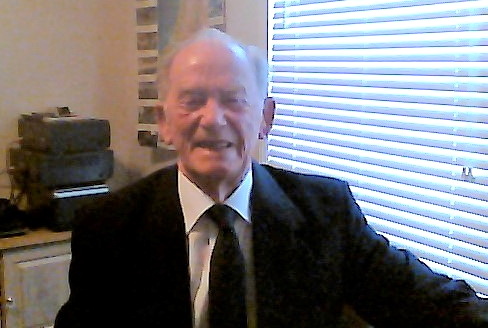
After my retirement, I had a job waiting with the State of Florida Division of Veteran’s Affairs and was assigned to the VA Hospital at Bay Pines, St. Petersburg, Florida. I worked at the hospital for only four months and could not provide a comfortable life for the family on state pay, so I enrolled at St. Leo University; under the GI Bill, I took two years to finish my degree work and graduated in 1978. From there, I joined the postal service and spent 24 years with them. It provided an excellent retirement income, and I had my VA medical provisions, so as of this date in 2024, I am doing fine.
What military associations are you a member of, if any? what specific benefits do you derive from your memberships?
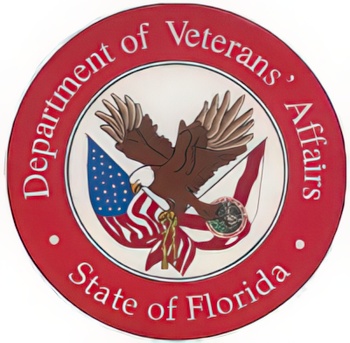
When I retired, I had a Florida state job waiting for me. I worked in the Florida Division of Veterans Affairs, and I was required to join the Veteran’s Associations to represent them in VA claims for benefits and compensation.
Unfortunately, I did not continue as a member after state employment. I am, at present, a life member of the DAV in Florida. They look out for my interest in new legislation and benefits
In what ways has serving in the military influenced the way you have approached your life and your career? What do you miss most about your time in the service?
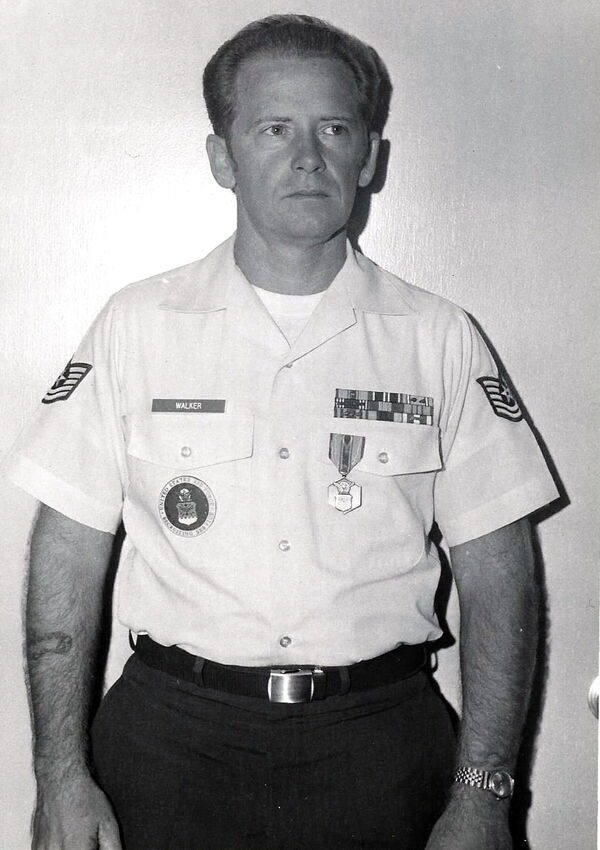
Wow, what a hard question to put a word to! I grew up in the Air Force. I am what I am because of everything that I encountered in my military career. We have heard it preached over and over that a young person should go into the military to “Grow up and mature,” and I certainly affirm that! I personally believe that we should do as Israel does and require a 2-year enlistment right out of high school, and our kids and our country would reap the benefits of such an endeavor. I spent my 20-year career with my family on a military base, and I can guarantee you that they would go back tomorrow if it were possible. When we drive onto the base, it is a tremendous feeling of safety and comfort……. we’re home!
Based on your own experiences, what advice would you give to those who have recently joined the Air Force?
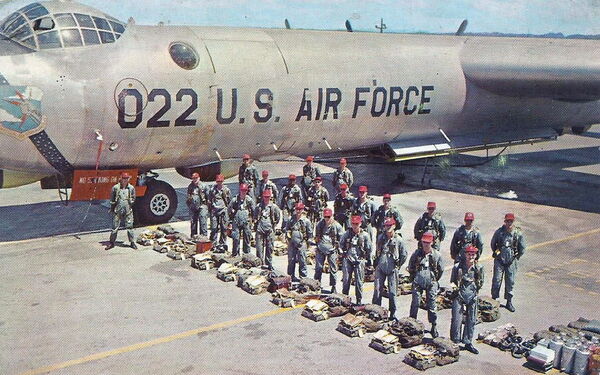
The first years are growing years. Many young people handle life in different ways, and some first-termers have a problem with having to answer to someone over them, but people have the same problem in civilian life with their supervisors and bosses. The best way to get through the growing years is to realize that you are growing into your job position as you would anywhere! You will mature and gain responsibility faster in the Air Force than most civilian careers, and I love traveling the world. Soon, the years go by pretty fast, and you realize that by reenlisting again, you are halfway home to that retirement, and you are the boss. Many Air Force personnel stay past their 20 years because they realize they have found their home!
In what ways has togetherweserved.com helped you remember your military service and the friends you served with.
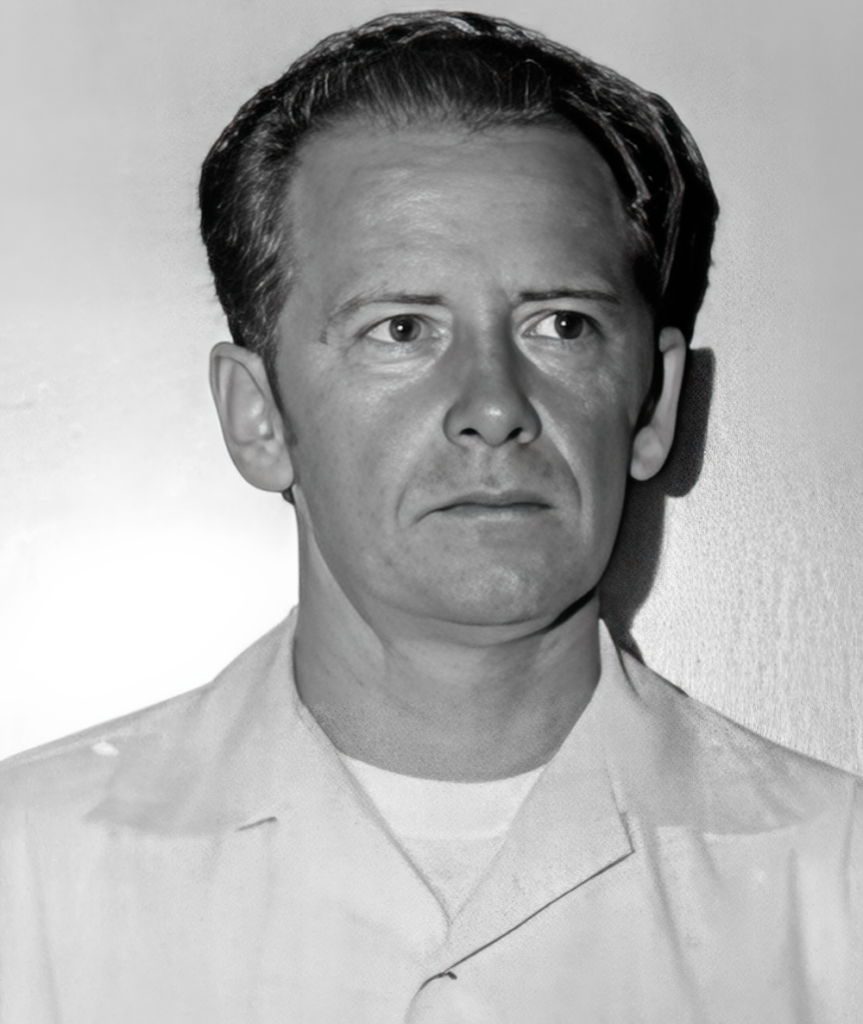
I have been a member of TWS for many years already and am a life member, and I certainly look forward to each edition. What a joy it is to look for old friends, read exciting and enjoyable stories, and create a life story for my children and grandchildren; actually, they are the ones who encouraged me to write my story. I really want to thank the creators of TWS, especially the editors and staff, who do a tremendous job with each edition I open. Thank You guys.
KC 11.1.24
PRESERVE YOUR OWN SERVICE MEMORIES!
Boot Camp, Units, Combat Operations
Join Togetherweserved.com to Create a Legacy of Your Service
U.S. Marine Corps, U.S. Navy, U.S. Air Force, U.S. Army, U.S. Coast Guard

0 Comments